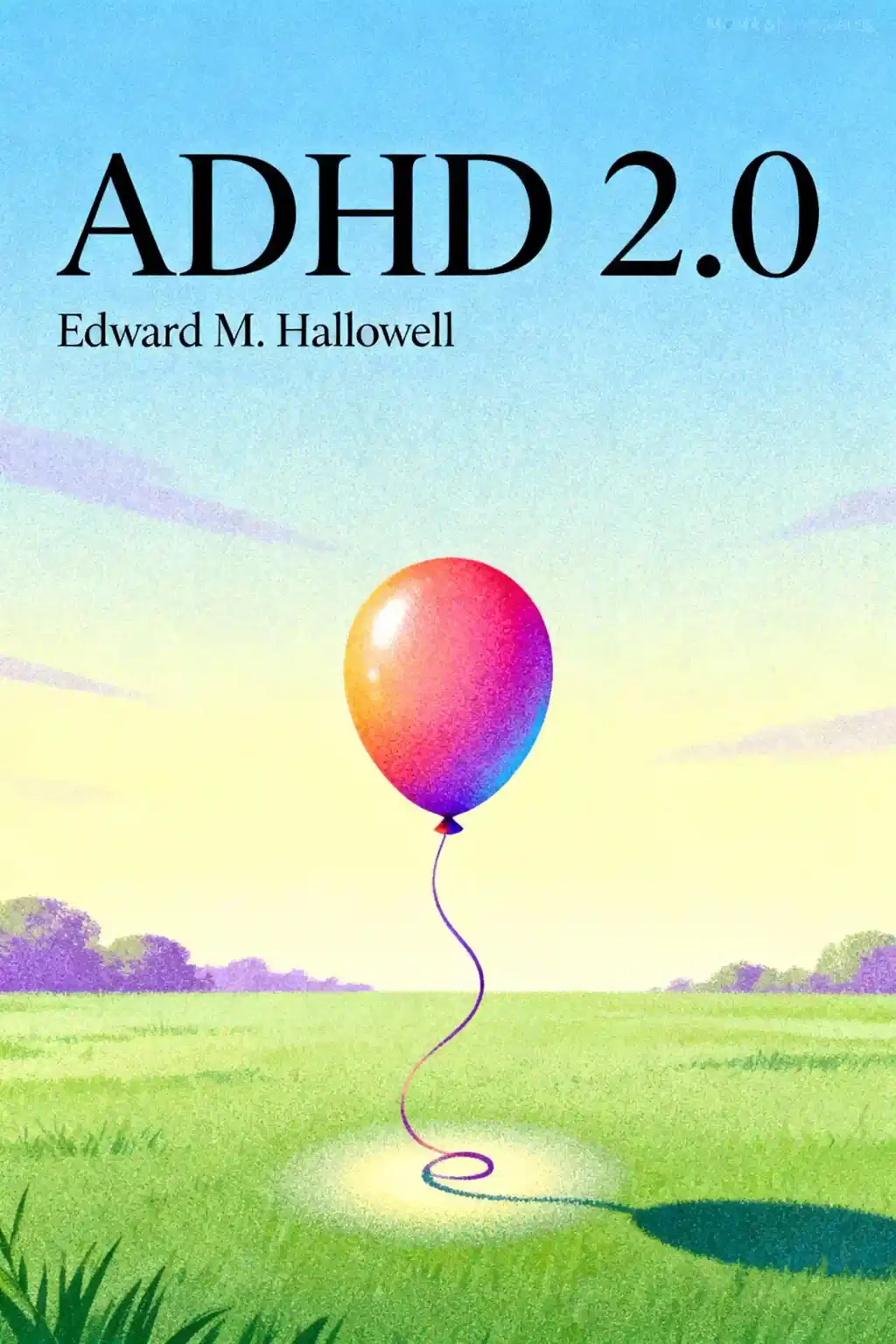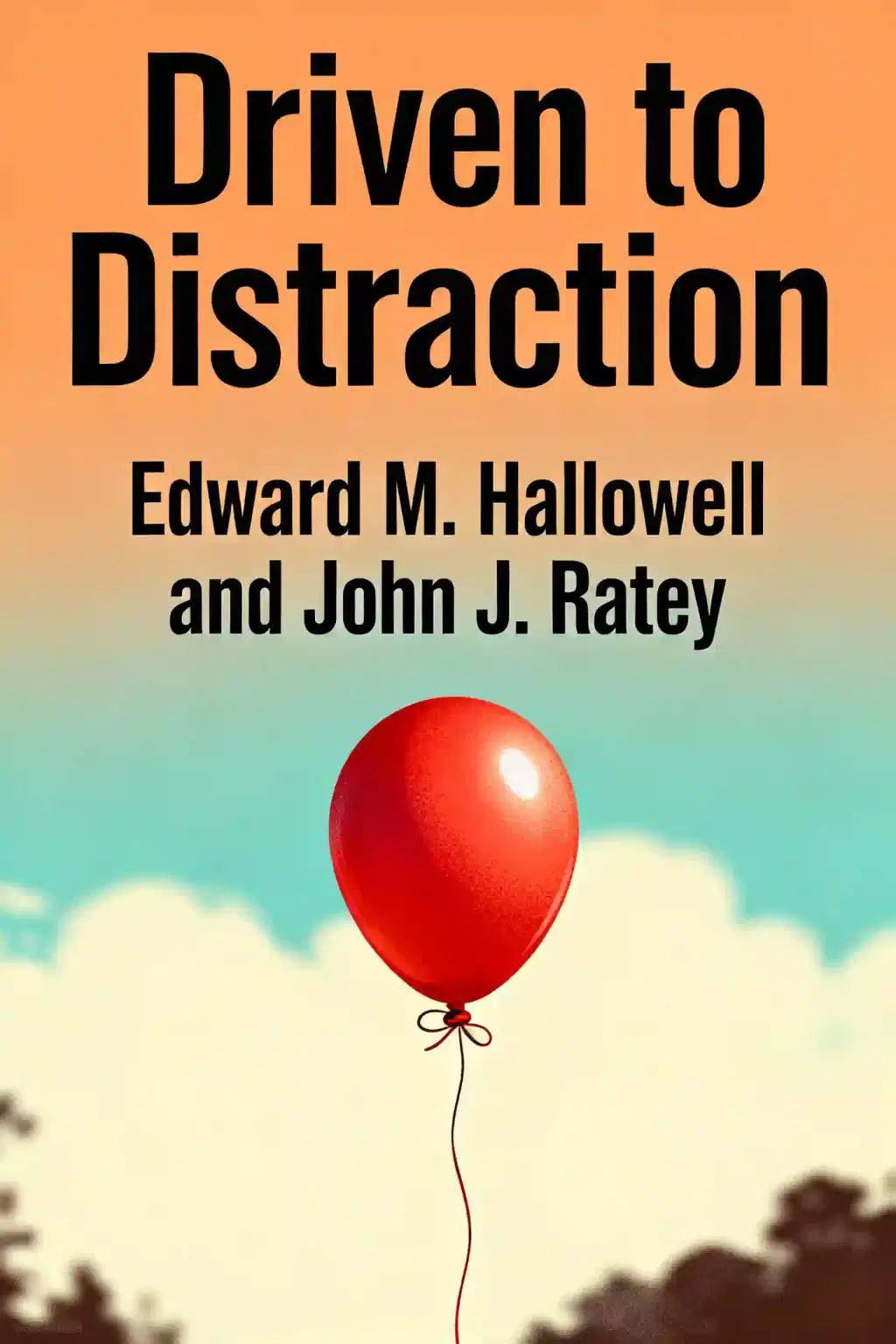What is
ADHD 2.0 by Edward M. Hallowell about?
ADHD 2.0 combines neuroscience and self-help to reframe ADHD as a "variable attention trait" (VAST) rather than a deficit. Drs. Hallowell and Ratey explore brain networks like the default mode (DMN) and task-positive (TPN), cerebellum function, and strategies like balance exercises, environmental tweaks, and fostering connection. The book emphasizes leveraging ADHD’s creative and entrepreneurial strengths while managing challenges.
Who should read
ADHD 2.0?
This book is essential for adults with ADHD, parents of neurodivergent children, educators, and therapists. It’s also valuable for professionals seeking to optimize productivity and anyone interested in neurodiversity. Hallowell’s actionable advice on medication, lifestyle changes, and reframing ADHD as VAST makes it a roadmap for transformative self-management.
Is
ADHD 2.0 worth reading?
Yes—ADHD 2.0 offers cutting-edge insights from pioneers in ADHD research. With 25+ years of updates since Driven to Distraction, it provides science-backed tools like cerebellum-strengthening exercises and the "other Vitamin C" (connection). Readers praise its empowering tone and practical frameworks for turning distractibility into creative fuel.
What are the key strategies in
ADHD 2.0?
Four core strategies include:
- Finding "the right kind of difficult": Pursue engaging tasks that activate focus.
- Environmental redesign: Optimize workspaces for ADHD-friendly productivity.
- Connection as "Vitamin C": Build relationships to counter negativity.
- Cerebellar workouts: Use balance boards to improve attention regulation.
What is the VAST model in
ADHD 2.0?
VAST (Variable Attention Stimulus Trait) replaces the outdated "deficit disorder" label. It highlights ADHD’s fluid attention patterns, which enable hyperfocus on passions but struggle with mundane tasks. The authors argue VAST better reflects the trait’s duality of challenges and strengths like creativity and risk-taking.
How does
ADHD 2.0 explain the ADHD brain?
The book details two key brain networks:
- Default Mode Network (DMN): Drifts into imagination/self-reflection.
- Task Positive Network (TPN): Manages focused work.
In ADHD, poor toggling between these networks causes distractibility. Strategies like physical activity help stabilize TPN dominance.
What role does the cerebellum play in ADHD?
Traditionally linked to movement, the cerebellum also affects attention and emotional regulation. ADHD 2.0 advocates exercises like balance boards to strengthen cerebellar pathways, improving focus and reducing "glitchiness." Studies suggest even 5-minute daily sessions yield benefits.
Does
ADHD 2.0 recommend medication?
Yes—the authors clarify medication’s role in regulating dopamine/norepinephrine while cautioning it’s not a standalone fix. They endorse combining prescriptions with lifestyle changes like exercise, sleep hygiene, and leveraging strengths. Case studies show meds enhancing (not replacing) behavioral strategies.
What is the "other Vitamin C" in
ADHD 2.0?
"The other Vitamin C" refers to connection—a antidote to ADHD-related shame. Hallowell stresses daily affirmations, physical touch, and collaborative work to boost self-worth. For example, parents are advised to replace criticism with "10-second hugs" to reinforce security.
How does
ADHD 2.0 differ from Hallowell’s earlier books?
While Driven to Distraction (1994) introduced ADHD to the mainstream, ADHD 2.0 integrates 21st-century neuroscience like DMN/TPN research and VAST. New tools include digital detox tactics, cerebellar training, and career-matching frameworks absent in prior works.
Are there criticisms of
ADHD 2.0?
Some note limited new clinical trials for interventions like balance boards. Critics argue the VAST model, while destigmatizing, might understate severe ADHD’s disabling aspects. However, most praise its actionable advice and strengths-based approach.
Can
ADHD 2.0 help with workplace challenges?
Absolutely. The book advises ADHD-friendly workspaces: noise-canceling headphones, standing desks, and "focus sprints" aligned with hyperfocus cycles. It also guides career choices using the "right kind of difficult" principle—matching roles to passion-driven persistence.




















